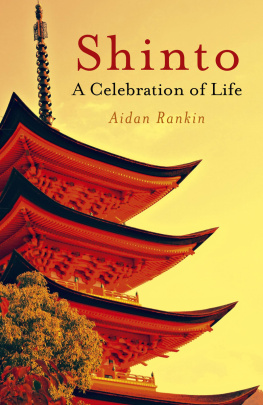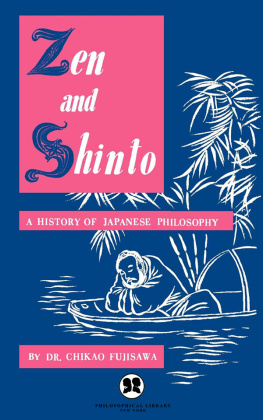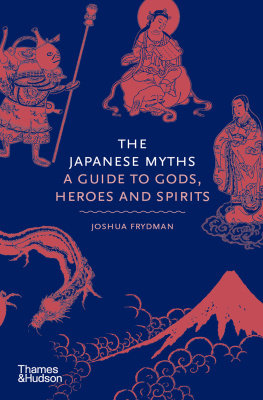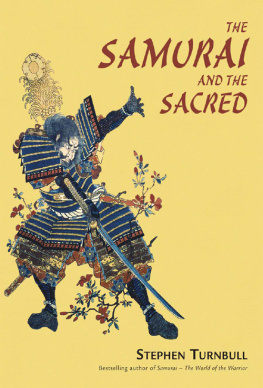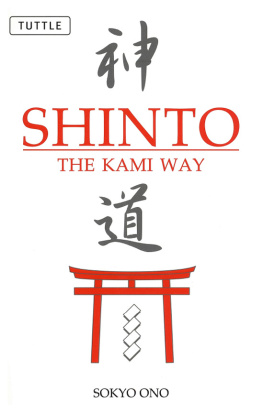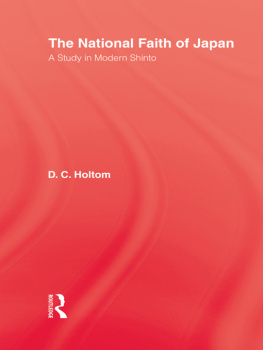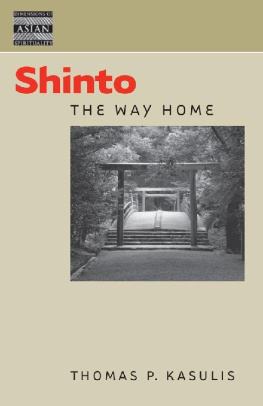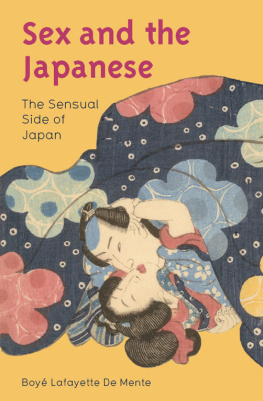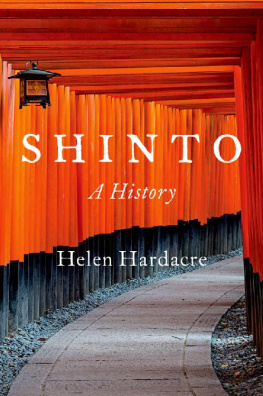Contents
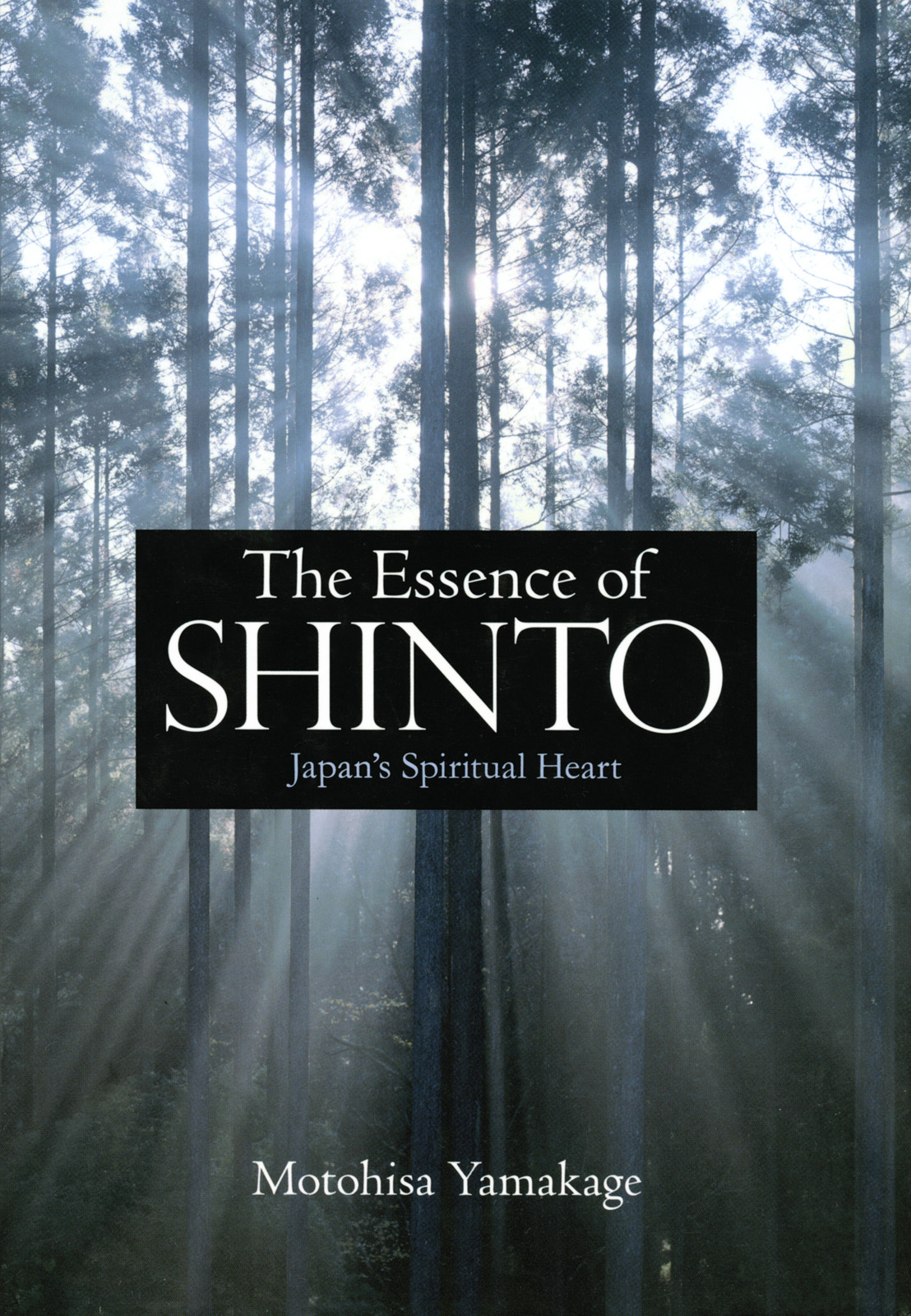
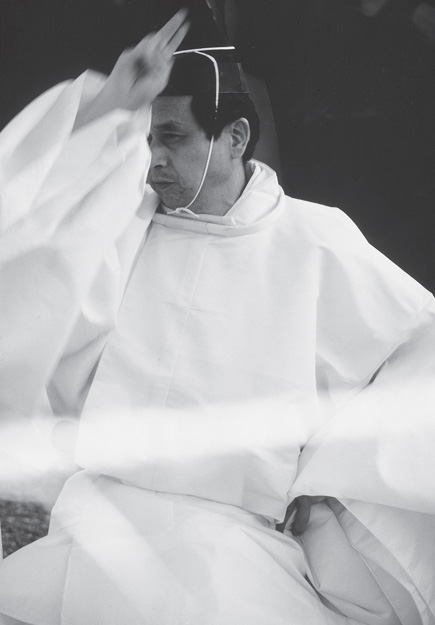
The Essence of
SHINTO
Japans Spiritual Heart
Motohisa Yamakage
TRANSLATORS
Mineko S. Gillespie
Gerald L. Gillespie
Yoshitsugu Komuro
EDITORS
Paul de Leeuw
Aidan Rankin
KODANSHA INTERNATIONAL
Tokyo New York London
NOTE FROM THE PUBLISHER :
The names of modern and contemporary Japanese appear in the Western order, while those of historical figures (pre-1868) are written in the traditional order: surname preceding given name.
For reference, the following chart shows those periods of Japanese history which will be most relevant to the discussion:
PERIOD NAME APPROXIMATE DATES ( A.D. )
Nara | 710784 | Azuchi-Momoyama | 15731600 |
Heian | 7941192 | Edo | 16001868 |
Kamakura | 11921333 | Meiji | 18681912 |
Muromachi | 13361573 | Taisho | 19121926 |
Nanbokucho | 13361392 | Showa | 19261989 |
Sengoku | 14671568 | Heisei | 1989 |
(Historians do not agree on exactly when the various periods started and ended, so the dates listed are approximate. Japanese writing often refers as well to nengo, or shorter periods named after each reigning emperor. Some of these will be introduced where relevant.)
Originally published in Japanese as Shinto no Shinpi by Shunjusha in 2000.
Distributed in the United States by Kodansha America, Inc., and in the United Kingdom and continental Europe by Kodansha Europe, Ltd.
Published by Kodansha International, Ltd., 1714 Otowa 1-chome, Bunkyo-ku, Tokyo 1128652, and Kodansha America, Inc.
Copyright 2006 by Motohisa Yamakage.
All rights reserved.
First edition, 2006
Library of Congress Cataloging-in-Publication Data
Yamakage, Motohisa, 1925
[Shinto no shinpi. English]
The essence of Shinto : Japans spiritual heart / Motohisa Yamakage ; translators Mineko S. Gillespie, Gerald L. Gillespie, Yoshitsugu Komuro ; editors Paul de Leeuw, Aidan Rankin.
p. cm.
Includes bibliographical references.
ISBN-13: 978-4-7700-3044-3
ISBN-10: 4-7700-3044-4
1. Shinto--Doctrines. 2. Spiritual lilfe--Shinto. I. Leeuw, Paul de, 1947- II. Rankin, Aidan, 1966- III. Title.
BL2221.Y355613 2007
299.561--dc22
2006035866
Ebook ISBN9784770050083
www.kodansha-intl.com
v4.1
a
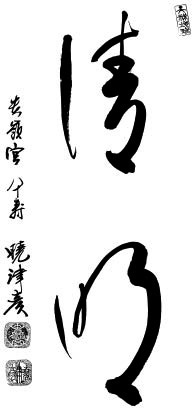
Calligraphy by the author: seimei (clean bright)
Table of Contents
Preface
The aim of this book is to express the essence of Shinto, especially its spiritual aspects, in terms readily accessible to the interested reader.
The word Shinto inevitably conjures images of a shrine for most people. For them, the shrine is a place where people go for seasonal festivals, offer prayers, worship Kami, or undergo the 753 (shichi-go-san) rite of passage. The role of the shrine extends to more mundane, but no less crucial, areas of life. Charm cards are issued to give confidence to those taking examinations, for instance, or to give drivers a psycho-spiritual defense against the dangers of the road. People of all creedsand nonewill congregate at Shinto shrines to see in the new year. Shrines in the modern era provide for a wide range of individual and collective needs, some of them overtly spiritual or religious in character, others more subtly so, reflecting the spirituality of everyday life, underlying all aspects of human experience. This union of the sacred and the mundane is a distinctive feature of Shinto.
The essence of Shinto is found in our relationship and interdependence with Kami. Or to put it another way, Shinto is the path through which we seek to realize ourselves fully as human beings by acquiring the noble characteristics of Kami. This possibility is open to all men and women, but we must first become attuned to the spirit of Kami, which is itself identical to the essence of Shinto.
In our troubled modern era, materialism is the dominant force, and so talk of the invisible world, the realm of the spirit, is not always well received. Shinto, however, would not be complete without this aspect of mystery. There is much evidence, especially in supposedly advanced societies such as Japan and the West, of a growing dissatisfaction with the purely material and the narrowly rational, and a resulting hunger for the mysterious coupled with a desire to reconnect with the spiritual realm. As an evolving, organic system of spiritual values, Shinto is well equipped to satisfy these basic human needs.
At this point, koshinto, which means the original Shinto of ancient times, becomes particularly important. Koshinto promotes the independent spiritual/mental training of each person for the improvement of their own character. Through koshinto, a systematic method of training has been handed down from ancient times. The institutionalized shrine exists for ritual services and prayers that reflect the rhythms of everyday life. Out of necessity, it responds to immediate and practical concerns, rather than providing the seeker with a systematic method of mental and spiritual cultivation. Koshinto, by contrast, allows the seeker to reach beneath the ritualized surface, to understand what Shinto really is, and be touched by the light of the spirit of Kami.
Koshinto, or Yamakage Shinto, has been handed down to me through many generations. Yamakage Shinto contains within it knowledge of ceremony, manners, rituals, methods of divination, traditional medicine, among an array of other things. It is an inclusive and comprehensive form of knowledge, of which this book touches upon only a few themes. The purpose is to give the reader an overview and so equip him or her for further practice or mental training. For example, I do not discuss in detail the procedures for ritual services and prayers for Kami, because these are available elsewhere. The ancient history of koshinto is also largely omitted from the text.
Shinto is the consciousness underlying the Japanese mentality, the foundation for Japanese culture and values. Japanese society is still in a state of confusion, one of the symptoms of which has been the proliferation of bizarre cults and sects. It is important, therefore, for the Japanese people to rediscover their spiritual essence and their cultural roots, and to make these a force for the good of humanity as a whole. I sincerely hope that my book will help achieve this aim.
Caring for the spirit of nature
In recent years there has been much talk of climate change and the disastrous consequences of human impact on the environment. We are constantly urged to limit our consumption of fossil fuels and live more respectfully with nature. This practical task of responding to the ecological crisis is given an ethical underpinning by Shinto, which from ancient times has seen it as the principal duty of human beings to care for and preserve their environmentto live within nature rather than attempting to dominate or destroy it. In Shinto, heaven, earth, and humanity are different manifestations of one life energy.


